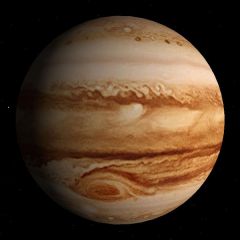Jupiter
Jupiter is the 5th planet from the Sun. It is the largest of the planets. As of January 2021, Jupiter has 79 known natural satellites, a number of which are available in the Outer Planets Add-on available on the Orbit Hangar Mods website here.
See also: Wikipedia [1]
Go to Addons for Jupiter
Natural satellites
| Jupiters natural satellites |
|---|
|
Named Satellites: Adrastea | Aitne | Amalthea | Ananke | Aoede | Arche | Autonoe | Callirrhoe | Callisto | Carme | Carpo | Chaldene | Cyllene | Dia | Eirene | Elara | Erinome | Ersa | Euanthe | Eukelade | Eupheme | Euporie | Europa | Eurydome | Ganymede | Harpalyke | Hegemone | Helike | Hermippe | Herse | Himalia | Io | Iocaste | Isonoe | Kale | Kallichore | Kalyke | Kore | Leda | Lysithea | Megaclite | Metis | Mneme | Orthosie | Pandia | Pasiphae | Pasithee | Philophrosyne | Praxidike | Sinope | Sponde | Taygete | Thebe | Thelxinoe | Themisto | Thyone | Valetudo Numbered Satellites: S/2003 J2 | S/2003 J4 | S/2003 J9 | S/2003 J10 | S/2003 J12 | S/2003 J16 | S/2003 J18 | S/2003 J19 | S/2003 J23 | S/2010 J 1 | S/2010 J 2 | S/2011 J 1 | S/2011 J 2 S/2016 J 1 | S/2017 J 1 | S/2017 J 2 | S/2017 J 3 | S/2017 J 5 | S/2017 J 6 | S/2017 J 7 | S/2017 J 8 | S/2017 J 9 |
| edit The Solar System | |
|---|---|
| Central star |
Sun (Sol) |
| Planets |
Mercury - Venus - Earth - Mars - Jupiter - Saturn - Uranus - Neptune |
| Natural satellites |
Moon - Phobos - Deimos - Io - Europa - Ganymede - Titan - more... |
| Add-ons |
Planets - Dwarf Planets - Small objects - Natural satellites - Alternative star systems |
 | This article, about a planet, is a stub. You can help Orbiterwiki by expanding it. |
